

People always ask where plots and characters come from, or what it was that triggered their creation. That’s a good question, and a difficult one to answer. It’s true what most writers say—that the characters determine the plot. But that’s not always the case. Like with everything else, there’s always an exception to the rule. So let me see. I’ll try and answer as best I can.
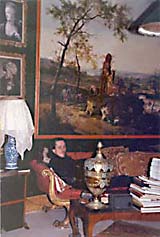
There are many factors which contribute to a book. First there is always the spark that starts the fire. In the case of one of my favorite Judith Gould novels, Forever, it was a weekend spent at a friend’s house in northwestern Connecticut. (The house itself appears as the country house of Stephanie Merlin’s grandfather, and is blatantly undisguised from the real one!) But what actually triggered the plot was listening to a CD of operetta compilations of a very famous opera star (whom I’d better not name, because so much of her real-life background turned into the fictional, but barely disguised, background of the major protagonist in that novel, Lili Schneider). I’d always been fascinated by the opera star, but this was the very first time I’d heard all the...er...fascinating details of her life! So in this case, it was definitely a character from whom the rest of the plot evolved.
Throughout Forever, music looms large (just as it does in my later novel, Rhapsody). For instance, take the scene in Budapest in which Madame Balász talks about Léo Delibes’ Le Rossignol, with Lili singing the words and she herself having sung the part intended for a flute. Well, that was directly inspired by Julia Hamari’s marvelous 1982 recording of that very song.
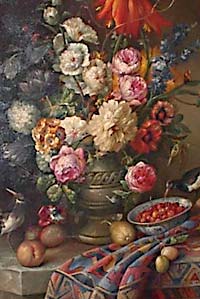
This Flemish-style oil painting, done by one of my good friends, helped inspire Leonie’s flower arrangements in The Best Is Yet To Come.
Then there is my real-life passion for art and antiques. As any Judith Gould reader knows, the decorative arts appear as lavish backdrops in all my novels, from Sins to The Parisian Affair—and even to Dreamboat. Haunting art galleries and the major auction houses have resulted in the accumulation of a minor but beautiful collection of art including a charcoal sketch by Stefano della Bella (1610-1655) to Old Master Paintings, to drawings by the likes of Thomas Hart Benton and a signed print by Picasso. One of my best friends, who I won’t name, used to be head of one of the two major New York auction houses, and has been very influential both in the development of my taste and, more importantly, providing the springboard for Too Damn Rich, which I set in the high- stakes world of a New York auction house. There again, many of the characters, from Robert A. Goldsmith and his social-climbing wife Dina, to the rather mysterious Becky V., among others, were based on real-life characters. But in this novel, it was the art, particularly the Old Masters Department at Burghley’s, my fictional auction house, rather than any characters, which first determined the plot. So you see? Even I never know what will ignite a plot until the magical moment happens!
Then there’s travel. In the case of The Best is Yet to Come, I already had the plot and characters clear in my head, but I needed to scout out new territory. I chose Amsterdam as the locale where Carolina Mountcastle’s husband dies—and to where Carolina travels after discovering that her husband was keeping a second, secret family, complete with another child, since I hadn’t used it as a location in any previous novel. So this particular trip was done purely for the research of a place rather than for the plot itself.
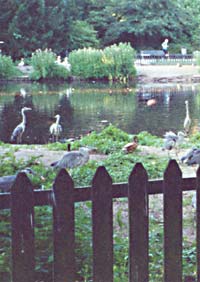
And here a family connection came in handy. Marion Bienes, a holocaust survivor who’d become an animal activist, introduced me to the “other” Amsterdam, places like Beatrix Park, which tourists never see. Yet another acquaintance serendipitously steered me to Amsterdam North, which is serviced by a free (can you believe it—free?) ferry. There, the picturesque waterfront houses and barges-turned-housboats decided the location of this “other” family, which Carolina is determined to destroy. I’m always super- excited when I discover spots which tourists rarely, if ever, see or even know about. Also, art once again played a strategic part in this novel—one painting in my personal collection (see the picture), is not a real Old Master, but was painted by a dear friend from Montevideo who specializes in mimicking the Old Masters, and I used it (and other genuine paintings of its kind) for the kind of floral arrangements which Carolina, a professional florist and party planner, conceives.

The Greek Villa required making several trips to Miami. The first was to scout out overall locations. For instance, I’d desperately wanted to use South Beach for Tracey Sullivan’s home, but in order to suit my plot purposes, I had to find a more appropriate spot, and did—Coconut Grove. But it wasn’t until I was back home and began to write that I realized how large a part the Brickell Avenue drawbridge would play in the beginning of the book. So I returned to Miami and spent several hours at the bridge, taking roll after roll of film, plus driving and walking back and forth it, pacing it off and making copious notes. (Luckily this was before 9/11, or else my behavior would have aroused the suspicions of the person in the drawbridge watchtower, and I would most likely have been questioned by the police about my motives.) But yes, a novel can require that kind of detailed research. If you’ve read The Greek Villa and really know Miami, you’re probably already aware of this.
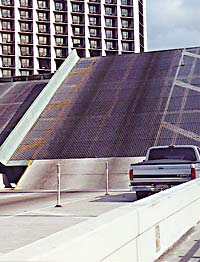
But that wasn’t all. I had to make yet a third trip to Miami to investigate “In” clubs like Kiss. And, since Tracey’s fiancé has a sleek high-performance yacht, and to get a really close look at Star Island, where his family has a waterfront mansion, I actually chartered a yacht and in the process studied that super-exclusive billionaire’s enclave from Biscayne Bay. Bonuses were getting a good view of the house used in the remake of the film, Scarface, which starred Al Pacino and Michelle Pfeiffer—and zipping down and seeing Vizcaya and its stone “galleon” from the water—all magical angles most people never get to see, and for which I thank my lucky stars.
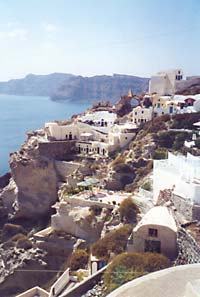
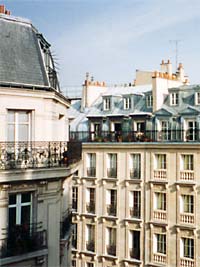
As the title suggests, The Greek Villa is set mainly in Greece, so that book really kept me on the road—or should I say, in the air! It required multiple visits to Santorini, an island I’d always avoided visiting. But I decided Urania Vicker’s villa had to be on Santorini, as it’s so remote from most of the other Aegean islands, which are clustered so close together you can usually see quite a few from the one you’re on. And oh, were my eyes ever opened! I discovered heaven on earth—if heaven is a sunken crater and a very active live volcano! Not only did I fall in love with Santorini, but it turned out to be ideal for the novel—and I once again learned why I couldn’t rely on guidebooks, but had to check out a location in person. If I hadn’t, I would have set the villa in the over-run town of Fira, rather than the more appropriate, and much quieter Oia. It’s these kinds of fine details which I think really bring a book to life.
Travel, as well as a familiarity with auction houses (in this case the auction of magnificent jewels), provided essential material for plot as well as a glamorous backdrop for The Parisian Affair. So did the real-life story of some jewels allegedly stolen from one of the 20th Century’s most famous women. And fiction once again followed events from real life. I discovered The Musée de la Chasse et de la Nature, a little-known museum, and when I returned home, I told an antiques dealer about it. And he told me how when he was there, shots were fired outside. So I subsequently used it as a setting where Allegra Sheridan is shot at, and where Ram’s chauffeur is murdered! Even the apartment I rented in Paris became part of The Parisian Affair, and is identical to the one Paul owns in the novel. All the locales are taken straight from real life, except for the jewelry shop in the Palais Royale. My fictional shop does not exist—but all the others in that elegant arcade do. So if you like, if you’re in Paris, you can follow Allegra’s footsteps and actually use The Parisian Affair as a kind of guidebook.
When you’re a writer, it seems nothing is sacred—so long as it results in a book. Such was the case of moving from Manhattan to the country. The bucolic Hudson Valley landscape of Thomas Cole and Frederick E. Church—and more specifically, undertaking the renovation of a dilapidated complex of barns (an on-going project) and turning them into a home—was the light-bulb moment for Till the End of Time. In this case, art really did imitate life. Leonie Corinth’s move from Manhattan to my own new permanent environs, and rescuing an octagon house, mirrored what was going on here. Amazing: I had my foundation for the story. Even Mossy, Leonie’s fictional real estate agent, was based on the one who in real life steered me to the tannery-turned-pump factory-turned-feminist theater (the first in the country!) -turned summer stock theater-turned arts center which was now my home. Fleshing out the rest of Till the End of Time, namely providing the elements of suspense, the love interest, and other characters, came naturally, and were built upon the foundation I already had. For once, there was no need to look beyond my very own walls for inspiration.
And then there are personal interests.
For example, this household is very fashion conscious. Open a closet and you’ll find such disparate labels as Gucci and Old Navy, Jean-Paul Gaultier and H&M, accessories from Bulgari to The Gap. High-ticket items rubbing sleeves with bargains from budget shops...because it’s not what you paid for them, but what you do with them, and how you put things together, that counts. So it was only natural that the worlds of fashion and design (along with their necessary locomotive, high society), have fueled more than one Judith Gould novel. Sins, the very first, was based on a Vogue-like fashion magazine empire. And fashion itself—as well as New York high society—came under microscopic scrutiny in Never Too Rich.
Ah! Never Too Rich! Now there was a novel which was the direct result of living in Manhattan for a quarter of a century, and having made the acquaintance (and friendships) of gossipy people from all levels of society. You might not have known it, but Never Too Rich is largely a roman à clef, having been based on thinly disguised real people! So much of it—from what happens in the Seventh Avenue headquarters of fashion designers to the mansion in Southampton where I set the climax (and which Calvin Klein recently purchased)...even the scene at FIT, the Fashion Institute of Technology, which came about from attending a special exhibit there called “Surrealism in Fashion”—was taken straight from real life.
You see? I can’t even view a museum exhibit without it triggering a scene in a book! Plus, I still always keep buzzing into Manhattan—because there’s nothing like having gossip sources in high society who tell you the things no gossip columnist would ever dare print...and no one would believe anyway. Unless, of course, it appears in a novel—as fiction!
You may be asking yourself: “When it comes to inspiration, is anything sacred?” The answer is, “Plenty of things are!” At the same time, I never know what might trigger a novel.
Take Time To Say Good-bye. Now there was a novel in which a number of real life factors came into play. It all started with reading an article in the New York Times about orchid growers on the West Coast who were threatened by the inundation of cheap orchids from Asia. Zing! Something clicked in my head. I’d been out to Santa Cruz County in California on quite a few occasions, since I have friends there. And I love to stay in Watsonville, renting a condo right in the midst of the dunes on Monterey Bay. And where was the orchid grower I’d read about? In Moss Landing, which is in Monterey County, barely a stone’s throw from where my favorite seafood restaurant is! A phone call resulted in a personal tour of The Orchid Zone by its owner, and that, combined with the condo I rent, combined yet with my passion for grottos (I’m actually working on my own), and even basing Josh and Joanna Lawrence’s house on my friends’, which is in the midst of an apple orchard, and voilà! I had everything I needed, even a plot I’d been sitting on. You see, I’ve always try to envision what could prove the greatest love of one person for another, and I believed I had the answer. Is it the answer? Well, some people tend to differ, but thus was Time To Say Goodbye conceived.
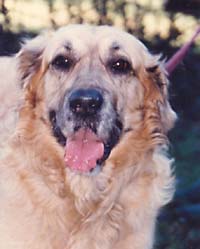
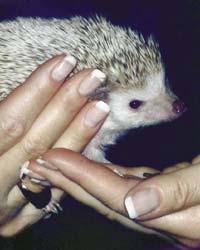
Two last examples of inspiration spring to mind. The first is A Moment In Time. Here is yet another instance where I didn’t have to look far from home, at least not for part of the plot. For a locale I once again used the Hudson Valley, since I live in the midst of “hunt country.” But why did I choose to make Valerie Rochelle a veterinarian? Simple. The move from city to country included Happy (“Hap”) Gould, the most marvelous Golden Retriever who ever lived. (He appears in the last scene of my third novel, Dazzle). He came from the animal shelter in San Francisco, hated Pacific Heights (where I lived for a short while) since there weren’t enough doggie smells on those immaculate streets, loved Manhattan for that very smelly reason, and spent his golden years in the country. Here, his veterinarian, the most marvelous animal doctor I’ve ever met, is a remarkable woman in every sense of the word. And when Hap had cancer, I trusted her implicitly. Finally, a massive stroke felled him, and his being so huge he couldn’t simply be carried out to the car and driven to the clinic. Would you believe, our lady doc was here—making a house call!—within minutes! I’ve never known a veterinarian so dedicated, competent, or kind (in my mind, she’s a saint). Also, her specialty in being a horse doctor for various racing stables (Saratoga Springs is not that far away), made her the inspiration for the ideal heroine. Of course, I took plenty of literary licence—one always has to. But thanks to Hap and the marvelous care he had, as well as his sad farewell, I had my main character for the next novel: the heroine of A Moment in Time is a lady veterinarian. And that being the case, a supporting cast of other animals was required. My friends in California had Spike, an African pygmy hedgehog, who had recently died, and whom I resurrected for the book, plus other friends and neighbors gave me permission and “donated” their pets, so to speak, as “special guest stars” in this novel. As I always say, it just goes to prove that you never know where a plot, or at least the background for one, and the various peripheral characters...even the inspiration for the main character...come from.
The Olympia Voyager at Sao Vicente, Cape Verde Islands (off the coast of Senegal, Africa). This voyage inspired my next novel, Dreamboat.
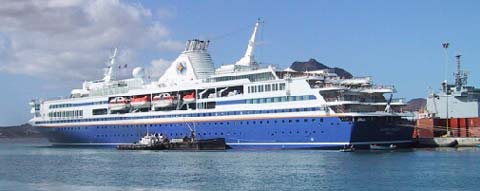
And last, but certainly not least, there’s my current project, due out next fall: Dreamboat. Initially, I took the transatlantic voyage from Greece, stopping in Sicily, Naples, Genoa, Nice, Barcelona, Tenerife, the Cape Verde Islands, the mouth of the Amazon, Devil’s Island, and up through the Caribbean, to hit spots I tend to miss during my usual travels. As it turned out, no particular spot was singled out for a future book—yet. But what was an eyeopener, since I usually charter a yacht here or there, was the cruise ship itself. The Olympia Voyager (sadly since out of commission, due to bankruptcy) was a spiffy, intimate, and nearly brand new ship which carried less than 850 passengers, and turned out to be a dream—as were the various people I met on board, most of whom were Europeans. Here the vessel itself, rather than the exotic ports of call, provided the impetus for a new plot. Well, so did the most eccentric of my fellow passengers. Before that cruise, if you’d asked me what I was going to work on next, I would have said, “I’m not sure.” But before the voyage was over, my yellow legal pads were full. I had the entire novel plotted—characters and all—before we disembarked at Port Everglades. Even I hadn’t expected that! In fact, you could have knocked me over with a feather! Now was that serendipity—or what?